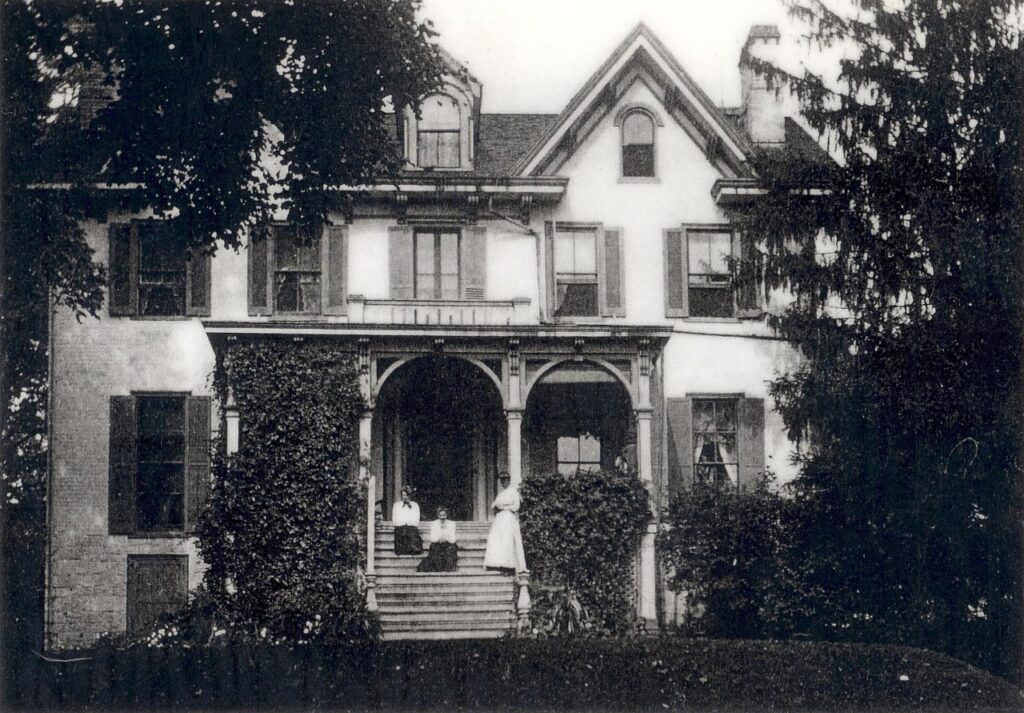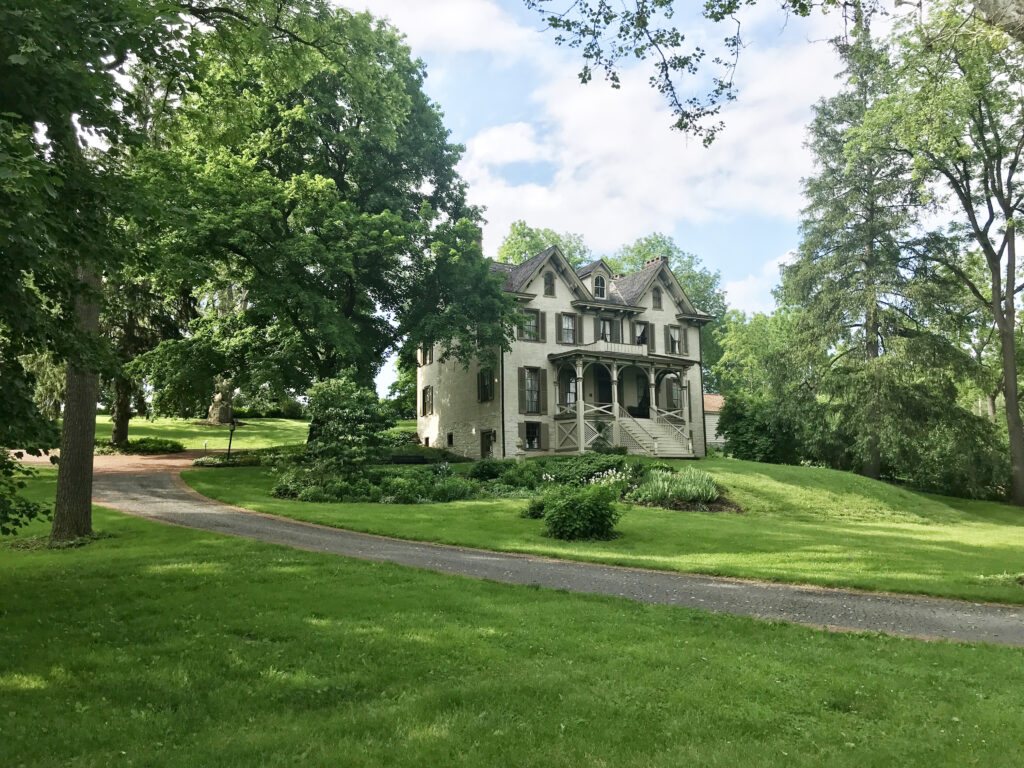The Centre Furnace Mansion, originally the home of the furnace’s ironmaster, was the meeting place for the founding of the institution that became Penn State. The mansion on East College Avenue is now a historic house museum and the headquarters of the Centre County Historical Society.
In 1791, two Revolutionary War veterans, Col. John Patton and Gen. Samuel Miles, established the Centre Furnace. Ironworkers moved into the area, and a village began to grow. When the furnace went into blast in 1792, Patton was its first resident ironmaster. He and Miles ended their partnership in 1798. During his time as ironmaster, Patton purportedly lived with his family in a log structure.

In 1809, the furnace ceased operations due to a decline in nearby resources needed to make iron. The furnace resumed operations in 1826 at the behest of Samuel Miles’ son, John Miles, and his brother-in-law, Joseph Green. Joseph Green was an architect, builder, and carpenter who is credited with having constructed the Centre Furnace as well as the Harmony Forge Mansion. He may have built the Centre Furnace Mansion in the years following the furnace’s reopening.
In 1832, Gen. James Irvin purchased an interest in Centre Furnace. Under Irvin’s his leadership, Centre Furnace became the largest iron exporter in Centre County.
Irvin’s sister Mary married Moses Thompson, a banker and landowner, who bought a share in Centre Furnace and became resident ironmaster in 1842. That year, Moses and Mary, along with their eight children, moved into the mansion.
In 1855, Irvin and Thompson donated 200 acres, along with a large sum of money, to a committee of the Pennsylvania State Agriculture Society in the hopes that Centre County would become the site for the Farmers’ High School of Pennsylvania. When the trustees visited Centre Furnace, they were won over by the community’s resources, additional land offers, and Mary Thompson’s hospitality. Historian John Blair Linn recounted that Mary treated the 150 guests to a “sumptuous” dinner.
The founding documents for the institution that became Penn State are said to have been signed in the east front parlor of the mansion. That room has since been named the Founders Room.

Although the mansion was originally built in Georgian-style architecture, the Thompsons kept the house fashionable in the 1860s by adding Victorian features such as balconies and a gingerbread-trim front porch. In 1881, industrialist Andrew Carnegie paid a visit to the mansion to purchase 300 acres of Centre Furnace’s Scotia ore fields for a large-scale mining operation.
The Thompson family continued to live in the mansion until Moses died in 1891. After Moses’ death, his son William resided in the mansion with his family until he was killed in an automobile accident in 1912.
In 1920, Madison Garver, a Penn State physics professor, purchased the mansion for his son David, who renamed the house “The Evergreens.” For more than fifty years, he operated several businesses on the property, including a gas station, swimming hall, dance hall, barbecue stand, and boarding house.
When David died in 1975, he bequeathed the mansion to the Centre County Historical Society, which took possession in 1978. The Centre Furnace Mansion was added to the National Historic Register in 1979.
A major restoration of the mansion’s interior took place in the 1980s. Another major project, that included replacing the mansion’s roof and rain collection system, as well as restoring the windows and shutters and painting the exterior, was completed in 2023.
Grey Rochon
Sources:
National Register of Historic Places Nomination Form, Centre Furnace Mansion.
Centre County Historical Society. www.centrehistory.org (Accessed February 12, 2021).
First Published: May 20, 2021
Last Modified: February 17, 2025
